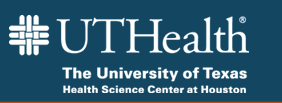Use of a Supplemental Radiofrequency Detection System Subsequent to Manual Counting of Vaginal Textiles Following Vaginal Birth
| Status: | Not yet recruiting |
|---|---|
| Healthy: | No |
| Age Range: | 18 - Any |
| Updated: | 4/21/2016 |
| Start Date: | November 2015 |
| Contact: | Teresa Byrd, MD |
| Email: | Teresa.T.Byrd@uth.tmc.edu |
| Phone: | (713) 500-6434 |
Use of a Supplemental Radiofrequency Detection System Subsequent to Manual Counting of Vaginal Textiles Following Vaginal Birth: A Prospective Effectiveness and Efficiency Study For Sponge Tracking
The purpose of this study is to evaluate the FDA-approved Radio Frequency Surgical Detection
System (RFDS) as a non-radiological means to ease the process of detecting retained sponges
and reconciling sponge counts in the labor and delivery room (following vaginal birth).
System (RFDS) as a non-radiological means to ease the process of detecting retained sponges
and reconciling sponge counts in the labor and delivery room (following vaginal birth).
This study proposes to evaluate the FDA-approved Radio Frequency Surgical Detection System
(RFDS) as a non-radiological means to ease the process of detecting retained sponges and
reconciling sponge counts in the labor and delivery room (following vaginal birth). It would
not replace any of the current standard-of-care safety mechanisms already in place at the
study site to prevent retained sponges. All safeguards remain enforced: counting, visual
inspection, and x-rays if indicated by standard protocol. The system being studied involves
the surgeon scanning the subject's vaginal area using a spherical device placed 1cm above
the symphysis pubis. This static scan will serve to detect any retained cotton texiles
within the vaginal cavity after birth. This Verisphere, a reusable device, is encased in a
sterile sheath during use. It does not come into direct contact with the subject's vagina,
but hovers above the pelvic/vaginal region. If any radio-frequency tagged sponges remain
inside the subject, a signal alerts the surgical team to remove them. The visible console
displays a confirmation code once the scan is complete. This confirmation code is kept as
part of the medical record once absence of retained textiles is confirmed. Once the provider
is assured there is no retained item, the same device may be used to scan trash receptacles
to locate a missing textile if the pre- and post-delivery sponge/guauze count remains
incongruent. This alleviates the need for the assistant personnel to manually "dig" through
soiled materials for sponge localization.
(RFDS) as a non-radiological means to ease the process of detecting retained sponges and
reconciling sponge counts in the labor and delivery room (following vaginal birth). It would
not replace any of the current standard-of-care safety mechanisms already in place at the
study site to prevent retained sponges. All safeguards remain enforced: counting, visual
inspection, and x-rays if indicated by standard protocol. The system being studied involves
the surgeon scanning the subject's vaginal area using a spherical device placed 1cm above
the symphysis pubis. This static scan will serve to detect any retained cotton texiles
within the vaginal cavity after birth. This Verisphere, a reusable device, is encased in a
sterile sheath during use. It does not come into direct contact with the subject's vagina,
but hovers above the pelvic/vaginal region. If any radio-frequency tagged sponges remain
inside the subject, a signal alerts the surgical team to remove them. The visible console
displays a confirmation code once the scan is complete. This confirmation code is kept as
part of the medical record once absence of retained textiles is confirmed. Once the provider
is assured there is no retained item, the same device may be used to scan trash receptacles
to locate a missing textile if the pre- and post-delivery sponge/guauze count remains
incongruent. This alleviates the need for the assistant personnel to manually "dig" through
soiled materials for sponge localization.
Inclusion Criteria:
- Adults only, 18 years or older
- Admitted as inpatients to labor and delivery; patients must be in anticipation of
vaginal delivery
Exclusion Criteria:
- Urgent or emergent admissions under the influence of preoperative medication, drugs
or alcohol.
- Age less than 18 years,
- The patient does not understand English well enough to adequately understand the
study.
- Hesitancy of the patient to participate or family reluctance based on the study
doctor's opinion.
We found this trial at
1
site
7000 Fannin St
Houston, Texas 77030
Houston, Texas 77030
(713) 500-4472

University of Texas Health Science Center at Houston The University of Texas Health Science Center...
Click here to add this to my saved trials